Equilateral Triangles
on the Circel of the Periphery
In my research into regular patterns I have come across the re-occurrence of the equilateral triangles on the circle at the periphery of a triangle. This phenomena has its counterpart in Equilateral Triangles on the Inscribed Circle (see below).
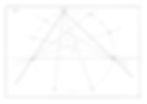

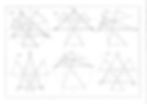
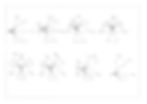
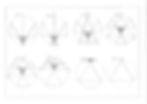
Fig.1
shows a scalene triangle A, B, C and its circle at the periphery. The angles of the triangle are provisionally divided into three (broken lines). The dividing lines intersect with the circle at the periphery in six points (D, E, F, G, H, I)
Fig.2
If every fourth point is connected, i.e. E & H, D & G, I & F, they form the equilateral triangle LMN.
Fig.3 - 8
show the same phenomenon occurring in various triangles (all triangles marked ABC).
Fig.9 - 12
show equilateral triangles formed by right-angled triangles (in figure 9 the triangle is a straight line and point A & B coincide)
Fig.13 - 16
show equilateral triangles formed by moving the point C of the initial equilateral triangle ABC to various positions (in figure 16 the triangle is a straight line and point A & C coincide)
Fig.17 - 24
show equilateral triangles formed by scalene triangles (in figure 17 the triangle is a straight line and point A & B coincide, in figure 24 the triangle is a point and ABC coincide)
Equilateral Triangles
on the Inscribed Circle
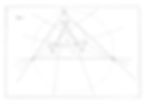
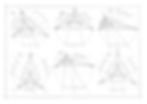
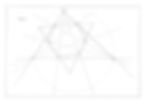
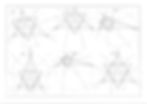
Fig.1
shows the triangle ABC and its inscribed circle. All three angles of the triangle are provisionally divided into three. The dividing lines (broken lines) intersect with the inscribed circle at the six points D1,E1,F1,G1,H1 & I1 (the six other points of intersection on the opposite side of the circle will be considered later.) If again every fourth point is connected, i.e. D1 & G1, I1 & F1, H1 & E1, the resulting three lines form an equilateral triangle L1,M1,N1 (as in the reoccurring equilateral triangles on the circle at the periphery.)
Fig.2 - 7
show the same phenomenon occurring in a variety of triangles.
Fig.8
shows a variation of the above phenomenon. This variation occurs as the dividing lines (broken lines) intersect with the inscribed circle a second time at the points D2,E2,F2,G2,H2 & I2. If these six points are connected in the same manner as before their intersection points L2, M2, N2 again form an equilateral triangle. Please note that the position of the points in Fig.1 has changed and that points that were separated lie now next to one another.)
Fig.9 - 14
illustrate the same phenomenon in a variety of triangles.